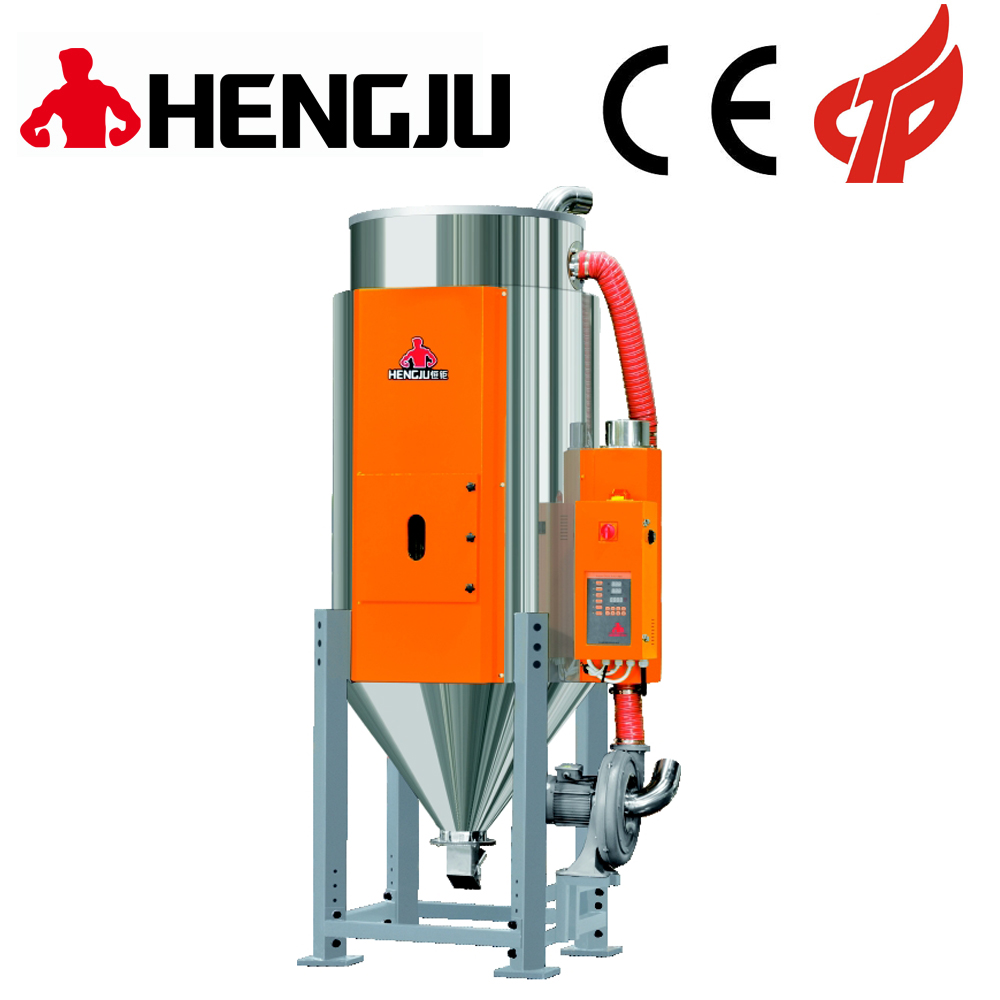Ordinary dryers use electric heating to heat hot air to dry the materials in the space at a high temperature, and the purpose is to evaporate water from the materials. The incoming air heated by the electric heating is the air in the environment. This is what we usually call a hot air dryer.
In dry weather and humid weather, the moisture content in the air is different. Therefore, when the weather is wet, incomplete drying of the material will occur. Because electric heating must first heat the incoming air, but the incoming air contains high moisture, how can the material be dried thoroughly? (Mainly reflected in materials with high moisture absorption rate, such as nylon).
For this reason, the desiccant dryer came into being. In view of the above situation, firstly, the ambient air is drawn in to remove the moisture in the air at a low dew point, and then relatively dry air is used to heat the material into the dryer to dry the material.
For this reason, the desiccant dryer came into being. In view of the above situation, firstly, the ambient air is drawn in to remove the moisture in the air at a low dew point, and then relatively dry air is used to heat the material into the dryer to dry the material.
Therefore, the difference between these two dryers is that the moisture content of the inlet air used for drying is different. One has processed the inlet air moisture, and the other has not processed the inlet air moisture.
|
 +8613669807274
+8613669807274
 +8613669807274
+8613669807274 wto-btb@wto-btb.com
wto-btb@wto-btb.com Tel: +8613669807274
Tel: +8613669807274 SMS: +8613669807274
SMS: +8613669807274